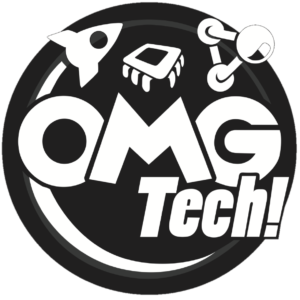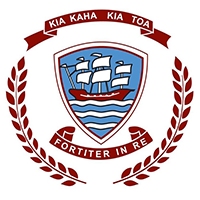FUTURE OF LEARNING
SHOWCASE OF FUTURES-LED THINKING IN EDUCATION
Learning Architecture
TĀMAKI COLLEGE
Tāmaki College has been building their hybrid learning programme for over 11 years. According to Vice Principal Russell Dunn, the school’s practice predates the term “hybrid learning.”
“Here at Tāmaki College, we’ve been calling it ‘ubiquitous learning’ for at least 11 years now,” says Russel. “We want learning to happen no matter where you are, or when you are!”
To that end, Russel and his colleagues have built a strong, user-friendly programme that enables ākonga success and has set the school up as a community hub with a tech focus. The school boasts some of the most developed IT and digital learning of any school in Aotearoa New Zealand.
Tāmaki College is the original Manaiakalani school and is part of the Manaiakalani Community of LearningIKāhui Ako (CoL), comprising 12 schools in the Auckland suburbs of Glen Innes, Panmure and Pt. England. When this initiative was established in 2010, Tāmaki College began using the Manaikalani “Learn, Create, Share” pedagogy as well as upskilling kaiako to use Google apps and basing ākonga mahi across the school in Google Classroom and Google Suite. Kaiako at Tāmaki College and the other original Manaiakalani schools quickly noticed that ākonga were struggling to collate their mahi on these platforms. For example, an ākonga might write an assignment in their own Google Doc rather than the one assigned to them in Google Classroom, resulting in the ākonga thinking the assignment was submitted but the kaiako not being able to see it. Kaimahi from these schools decided to design their own digital tool for learner management and collaborated on Hāpara (meaning dawn), an app for learners and their kaiako that is now used not only across Tāmaki College but in over 40 countries around the world. Hāpara brings together information from Google Classroom, Google Suite, and a variety of other online learning platforms. It shows kaiako a simple dashboard on which all ākonga and all of their mahi (work) in various apps are visible. The ākonga get a dashboard which brings together assignments from all of their subjects and shows a clean-looking notification feed with feedback alerts and reminders of upcoming due dates. It’s easy for ākonga to see at a glance what they have coming up and what needs to be finished first, and Russel demonstrates how kaiako can “drill down” to see where any given ākonga is up to on any given task. Ubiquitous use of Hāpara across the school means that everything that both ākonga and kaiako need to access online is stored in one central, easily accessible place.
Crucially, because Hāpara shows everything that ākonga are working on at whatever stage it is up to, kaiako are able to see and acknowledge mahi that is not yet complete. The ākonga also have a section in their workspace entitled “evidence,” which they can fill in as they work with links to anything partially completed that they want to highlight for their kaiako. Russel sees this as a priority. “We should be giving credit for the journey of learning,” he explains. This links back to the idea of learn, create, share, which is built around sharing a continuous journey of learning rather than waiting until an endpoint to get feedback which it’s then too late to apply.
Locating all digital materials centrally makes it easy for kaiako at Tāmaki College to cover for or even replace each other. Russel describes how a hinerau (digital technologies) kaiako left the school mid-year and was able to leave all necessary content, planning and in-progress ākonga mahi set up for the new kaiako to take over. Curriculum content and resources were therefore a non-issue with the transition, leaving the new kaiako plenty of time to focus on building relationships with the ākonga. Beginning teachers at Tāmaki College are similarly able to get started quickly and can even use another teacher’s lessons until they learn how to create their own. When kaiako are absent, relievers can pick up exactly where the kaiako left off, and when ākonga are absent they can access all of their online learning from home just as they would at school.
Recently, Tāmaki College has been making changes to the structure of classes as well. In 2017, they moved away from streaming and introduced mixed ability junior classes, with kaiako reporting a visible positive impact on ākonga performance and motivation. And in term 3 of this 2022, they trialled a hybrid learning model in which ākonga spent one day per week learning from home and came into school in person on the other four days. Ākonga under 14 who could not be supervised at home were allowed to opt out of this, and whānau were asked to support their rangatahi to focus on their learning during school hours. The trial ran for one term and was then reviewed according to feedback from ākonga, whānau and kaiako, with positive results. Senior leadership determined the trial to be a success and used feedback from all involved to adapt the programme for permanent use.
Tāmaki College’s learning architecture is noteworthy not only for its user-friendly setup (simple to access and navigate, yet comprehensive in content) but because this setup was among the first of its kind and continues to develop, with feedback from ākonga and whānau taken into account as the development progresses. Tāmaki College has set a precedent which other schools are learning from and beginning to follow more than a decade later.



